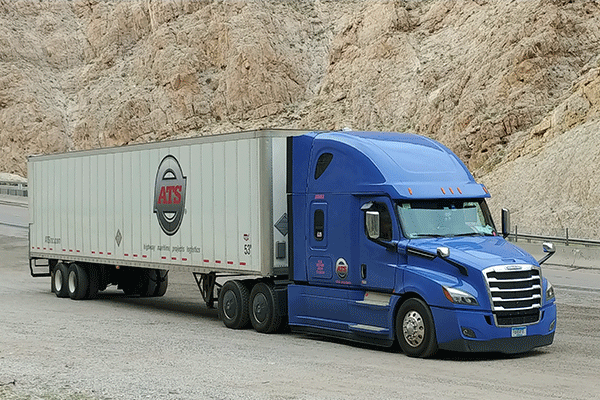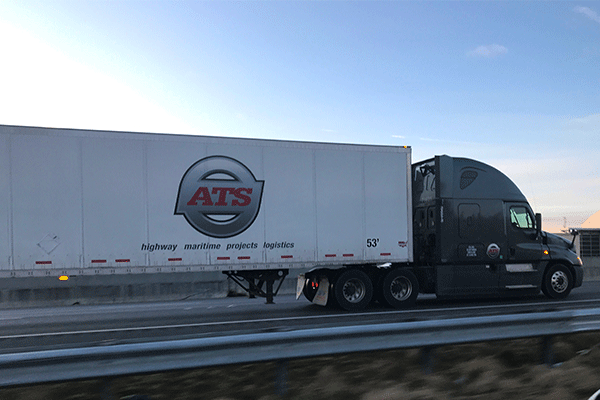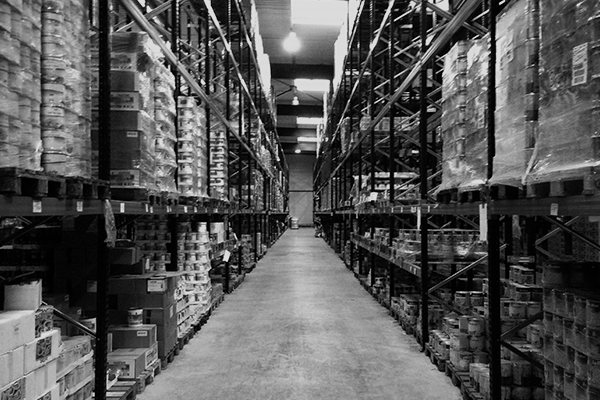
In recent years, the Food Safety Modernization Act (FSMA) has been central to this nation’s consumable food supply chain. And, as a shipper who moves these goods, you’ve certainly felt its impact on yours.
Understanding this rule is crucial to ensuring compliance, but it can often be difficult to know exactly what’s expected of you. This is especially true when it comes to the transportation of your cargo.
“Where do my responsibilities lie?” “What should I be sure to tell my provider about?” and “What type of food is impacted by this rule?” are all questions you’re looking to answer. Today, we’ll do just that.
Here at ATS, we’ve seen the transportation industry change in many ways over the last 65 years. And, although they’re initially disruptive, these changes always make our world safer than before. The Food Safety Modernization Act is one such change.
In this article, we’ll tell you everything you need to know about the FSMA including what it is, what it asks of shippers like you and how you can make sure you’re compliant with all governmental guidelines.
What is the FSMA?
On April 6, 2017, the Food and Drug Administration (FDA) passed its Food Safety Modernization Act. This rule was drafted, and published, by the FDA to prioritize the safety, and safe handling, of all food designated for both human and animal consumption.
To prioritize safety, decrease instances of food-borne illness and supervise the United States’ global food supply chain a bit further, the FSMA hits its mark.
First, to mitigate the circumstances that lead to food contamination during its lifecycle, the FSMA outlines seven specific rules to promote safe-to-eat food production.
The first six of these rules outline:
- Additional controls on food meant for human consumption: Each of the FDA’s registered food producers must outline (in writing) their plans for preventing hazardous conditions and the steps they’ll take to ensure top-grade products.
- Additional controls on food meant for animal consumption: Each of the FDA’s registered animal food producers must outline (in writing) their plans for preventing hazardous conditions and the steps they’ll take to ensure top-grade products.
- General Produce Safety Guidelines: Outlines the minimum standards for the production (growth, packaging, storage, etc.) of produce.
- Verification program for international suppliers: Each party importing goods to the U.S. must first verify that international suppliers comply with all FDA standards.
- Accredited Third-Party Certification: Gives certain third-party certification companies the legal ability to administer audits and consult food producers on best practices in anticipation of regulatory audits.
- Additional Food Defense: Each FDA-registered food facility must document, and develop a plan to avoid, all possible contamination vulnerabilities within their ecosystem.
Although these first six rules cover many aspects of our consumable food production funnel, they’re missing one crucial piece — the process for transporting these goods.
Never fear though, this isn’t an oversight. The seventh rule presented in the Food Safety Modernization Act outlines expectations for the “Sanitary Transportation of Human and Animal Food”. Let’s dig into it.
How does the Food Safety Modernization Act Impact Your Freight?

If you’re a shipper who moves consumable products, the food safety modernization act may not actually apply to you. In the establishment of this rule, the FDA is only concerned with monitoring food for safety and not solely quality. This is an important distinction to make.
Say, for example, that your company produces and transports mass quantities of chocolate.
Nobody likes to eat a melted chocolate bar and, without proper transportation, the quality of these products could be jeopardized.
That said, a melted chocolate bar is still just that, a chocolate bar — melted, but still delicious. Melted chocolate is far from dangerous and, as such, the FSMA doesn’t directly target them.
On the other hand, if you’re a shipper who moves raw poultry, this FDA regulation will apply to your supply chain. Without proper handling, oversight and direction, raw poultry can quickly go from a soon-to-be feast to a festering pile of food-borne sickness.
Risks can’t be taken when getting food like chicken onto store shelves and the FSMA looks to prevent all mishaps.
When working with a transportation company to move freight intended for human and animal consumption, it’s always been important to vigilantly monitor the safety of your product. The 2017 FSMA didn’t change this.
What the FSMA did change, however, is the process of working with this nation’s transportation providers to move these goods.

You see, according to this rule, all of the parties responsible for moving food-grade loads are equally responsible for their safety.
Most specifically, the FSMA establishes and specifies the transportation operation requirements, vehicle and equipment conditions (food-grade trailer standards), record-keeping practices and training procedures, necessary for this process.
It takes a steady, practiced, hand to transport high-risk consumable food from A to B. And, the FSMA sets guidelines for companies to establish these competencies at all avenues of this process.
With this rule, the responsibility falls on shippers, receivers, carriers, loaders, unloaders and brokers to ensure that all food is transported correctly and, most importantly, safely.
How To Follow Food Safety Transportation Standards
To abide by the food safety modernization act’s guidelines, transportation companies must align themselves with FDA regulations in the following categories:
- Vehicles and transportation equipment: The design and maintenance of vehicles and transportation equipment must ensure that the food they transport doesn’t become unsafe.
For example, all equipment must be suitable, adequately cleaned for their intended use and capable of maintaining temperatures necessary for the safe transport of food.
- Transportation operations: All measures taken during transportation must ensure food safety — such as adequate temperature controls — prevent contamination of ready-to-eat food from touching raw food, protect food from contamination by non-food items in the same load, or on a previous load, and protect food from cross-contact to avoid the unintentional incorporation of a food allergen.
- Training: Training of carrier personnel in sanitary transportation practices and documentation of each training session.
- Records: Maintenance of records of written procedures, agreements and training. Records of temperature control monitoring, specific load information with shipper requirements each carrier must follow and documentation of loss or potential loss/recall of load.
Some of this nation’s top providers utilize internal systems to ensure that all necessary documentation is kept on file and every shipment is handled appropriately.
The best providers continually train employees on food-transportation best practices and ensure that every reefer used to transport temperature-sensitive freight is in good, working order.
Additionally, ATS Logistics' multi-step carrier vetting system serves to limit the dispatch of any carrier in our network without the skills or experience needed to transport this type of freight.
How Can You Ensure Compliance With The FSMA’s Rules?

The first step you’ll need to take to maintain a record of compliance with the FSMA’s rules is to dust off that old pen and paper of yours. That’s right, you’ll need to write down your consumable commodity’s requirements and share this information with each transportation provider you work with.
Written documentation of each product’s handling, storage and treatment specifications is key to preventing unsafe food from reaching American households.
By “documentation” we don’t mean a finely drafted legal document that clearly indicates responsibilities and identifies limits of liability on all sides. Although these types of documents are used and provide useful tools, hiring a lawyer won’t be necessary.
In many cases, a simple email — where all specifics are outlined — will do.
In these written records, work with your provider to outline:
- Whether your commodity requires temperature control and at what temperature.
- Is it important that your trailer is pre-cooled?
- Whether special transportation certifications are required from your driver.
- Whether pre-cleaning procedures are necessary.
After your product’s transportation needs are identified, be sure to turn this information into a re-usable template. This will be the document you consistently turn to when working with a new transportation provider.
Having a “safe transportation template” for your consumable food products will ensure that everyone is on the same page and all your bases are covered. Safely transporting your goods — especially with various providers — truly comes down to communication. Make sure no lines get crossed from one provider to another by having a tried and true process — and document — at your fingertips.
Finally, if you’re unsure of whether the FMSA’s regulations apply to your freight or what steps you should take to ensure compliance, be sure to connect with a competent transportation provider.
This company will be able to give you all the information you need to make decisions for the safe transportation of your freight.
Let’s Keep This World Safe
The importance of the Food Safety Modernization Act (FSMA) can’t be overstated. Since 2017, this rule has worked to keep American citizens far from the reach of food-bourne illness.
And, when it comes to the transportation of your products, doing what you can to assist in this effort is crucial. Take the information in this article with you in your journey toward transportation excellence.
Always be sure to document your product’s needs, turn this documentation into an easily re-usable template and do so for every product you have.
Lastly, should you have any questions about how the FSMA impacts your business or what you should be doing to ensure compliance, please reach out to us here at ATS. We have a transportation expert standing by to help you in any way you need.




